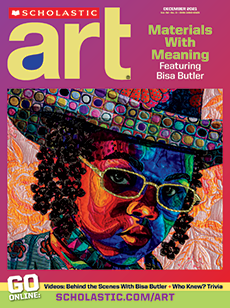Not long ago, David Hockney commented that some people criticize his work for being “all over the place.” But the artist rejects that assessment. “I’ve always been consistent,” he says. This is clear in his career-long exploration of how we see the world—and of new technologies to help him do so. Whether achieved with paint on canvas or with the latest technology, space and place are central themes in Hockney’s work.
Some people say David Hockney’s work is “all over the place.” But the artist disagrees. Hockney has always experimented with new technologies and ways of making art. And he continues to explore space, place, and how we see the world.
